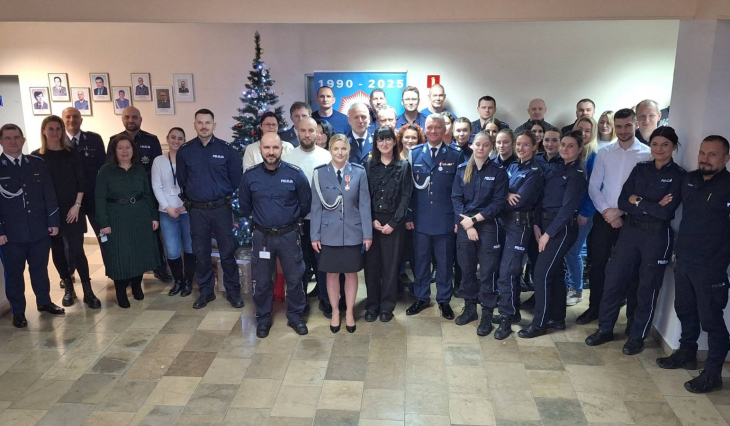
HONOLULU- A Hawaiian Airlines (HA) flight from Honolulu (HNL) to Tokyo Haneda (HND) faced a mid-air emergency when a passenger’s cell phone caught fire at 40,000 feet. The incident, caused by a lithium-ion battery, raised safety concerns and prompted a priority landing.
The incident occurred aboard Hawaiian Airlines Flight HA457, prompting the flight crew to declare an emergency and request a priority landing at Tokyo Haneda Airport (HND). The aircraft landed safely, and no injuries were reported by PYOK.
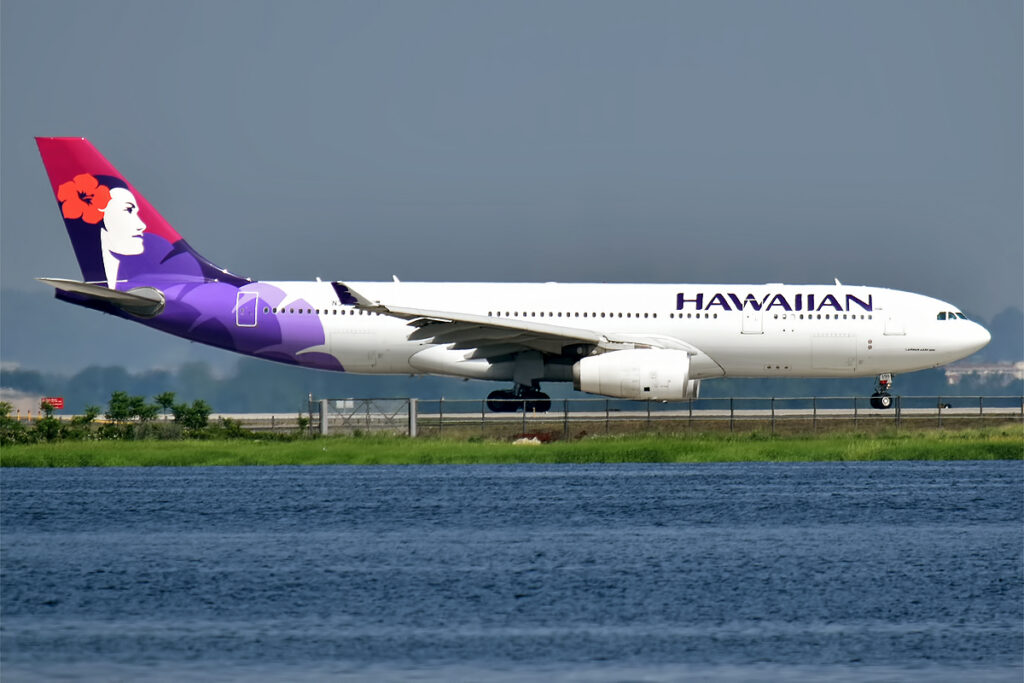 Photo: By Anna Zvereva from Tallinn, Estonia – Hawaiian Airlines, N390HA, Airbus A330-243, CC BY-SA 2.0, https://commons.wikimedia.org/w/index.php?curid=87516916
Photo: By Anna Zvereva from Tallinn, Estonia – Hawaiian Airlines, N390HA, Airbus A330-243, CC BY-SA 2.0, https://commons.wikimedia.org/w/index.php?curid=87516916Hawaiian Airlines Flight Catches Fire
On a Hawaiian Airlines (HA) flight from Honolulu (HNL) to Tokyo Haneda (HND), cruising over a remote area of the Pacific Ocean, passengers on Flight 457 began noticing a strong burning odor.
According to Hawaiian Airlines, now a subsidiary of the Alaska Airlines Group, flight attendants traced the source to a mobile phone that had become jammed and damaged inside a passenger seat.
Flight attendants retrieved the phone and secured it in a fire containment bag, a standard tool for handling lithium-ion battery fires.
The pilots declared an emergency, securing priority landing at Tokyo Haneda. The Airbus A330, carrying approximately 140 passengers, landed safely with no injuries.
The aircraft was grounded for five hours, longer than a typical turnaround, for engineers to inspect the seat for damage.
Lithium-ion battery fires are notoriously difficult to extinguish due to a process called “thermal runaway,” where the battery overheats uncontrollably.
In this case, the crew’s swift action prevented escalation, but the incident underscores the challenges of managing such fires in confined aircraft cabins.
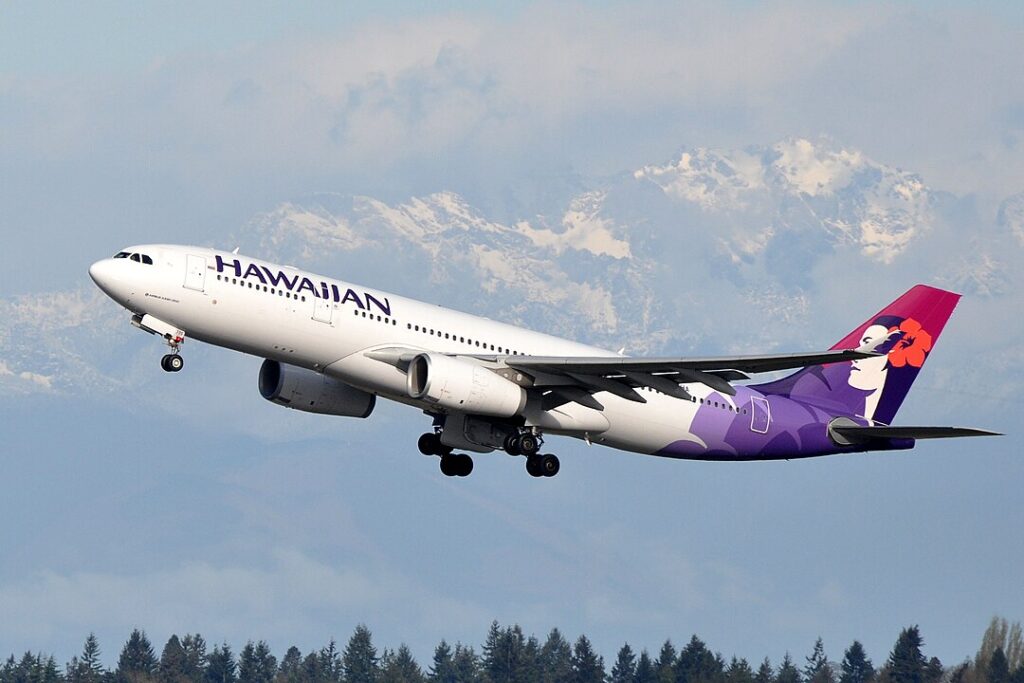 Photo: By Eric Salard – N395HA SEA, CC BY-SA 2.0, https://commons.wikimedia.org/w/index.php?curid=40657411
Photo: By Eric Salard – N395HA SEA, CC BY-SA 2.0, https://commons.wikimedia.org/w/index.php?curid=40657411Rising Concerns of Lithium-Ion Fires
Lithium-ion batteries, common in devices like cell phones and laptops, pose a growing risk in aviation.
Recent high profile incidents highlight the danger. In January, an Air Busan (BX) Airbus A321 at Gimhae International Airport (PUS) in South Korea was gutted by a fire from a passenger’s portable battery pack in an overhead bin.
All passengers and crew escaped with minor injuries, but the aircraft was destroyed. Such incidents have prompted airlines to tighten restrictions on portable battery packs.
However, any lithium-ion device can overheat if damaged, particularly when stuck in seat mechanisms.
This risk has led to updated safety protocols, including flight attendants urging passengers not to adjust seats if a device is lost, as this can crush the battery and trigger a fire.
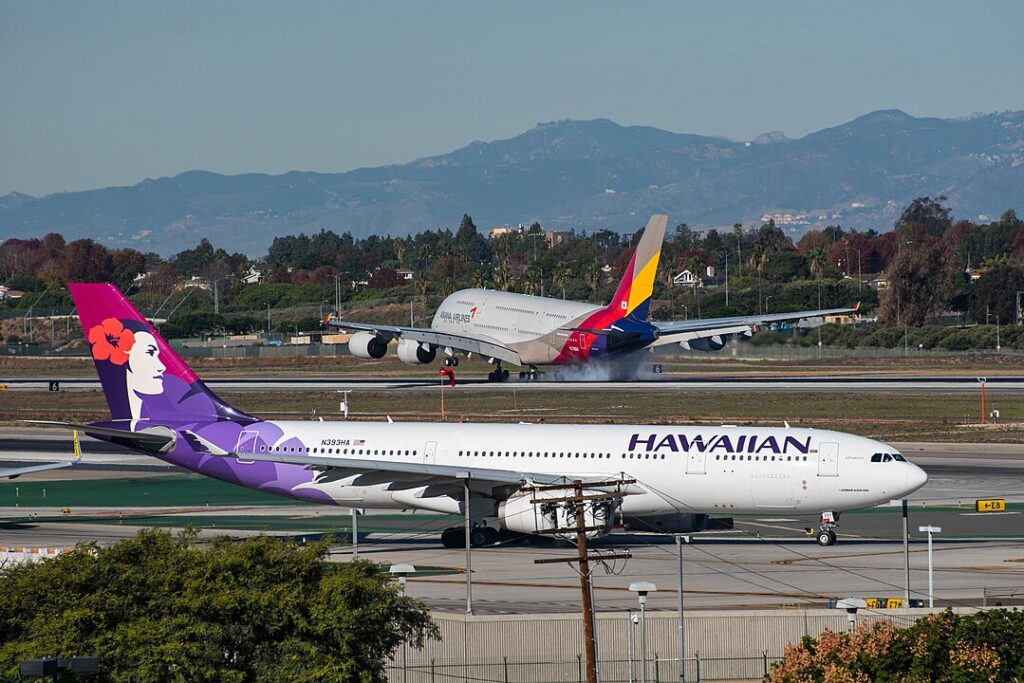 Photo: By Glenn Beltz from Goleta, Hawaiian Airlines Airbus A330 at Los Angeles International Airport (LAX) USA – DSC_1167, CC BY 2.0, https://commons.wikimedia.org/w/index.php?curid=44954017
Photo: By Glenn Beltz from Goleta, Hawaiian Airlines Airbus A330 at Los Angeles International Airport (LAX) USA – DSC_1167, CC BY 2.0, https://commons.wikimedia.org/w/index.php?curid=44954017Fire Containment vs. Alternative Methods
Fire containment bags are widely used by airlines to manage lithium-ion battery fires, as they limit oxygen to smother the blaze. There is ongoing debate over the effectiveness of fire containment bags.
The “Fire Triangle” principle, removing heat, fuel, or oxygen to extinguish a fire, suggests simpler methods, like submerging a device in water, may better eliminate heat and oxygen. Water is not always practical in-flight, but it remains a viable option in some scenarios.
However, most commercial airlines, including Hawaiian Airlines, continue to use these containment tools as part of their standardized safety kits.
While these bags can contain small fires, critics argue they may not fully address thermal runaway in larger or more intense incidents. Ongoing research and crew training aim to refine these tools and techniques.
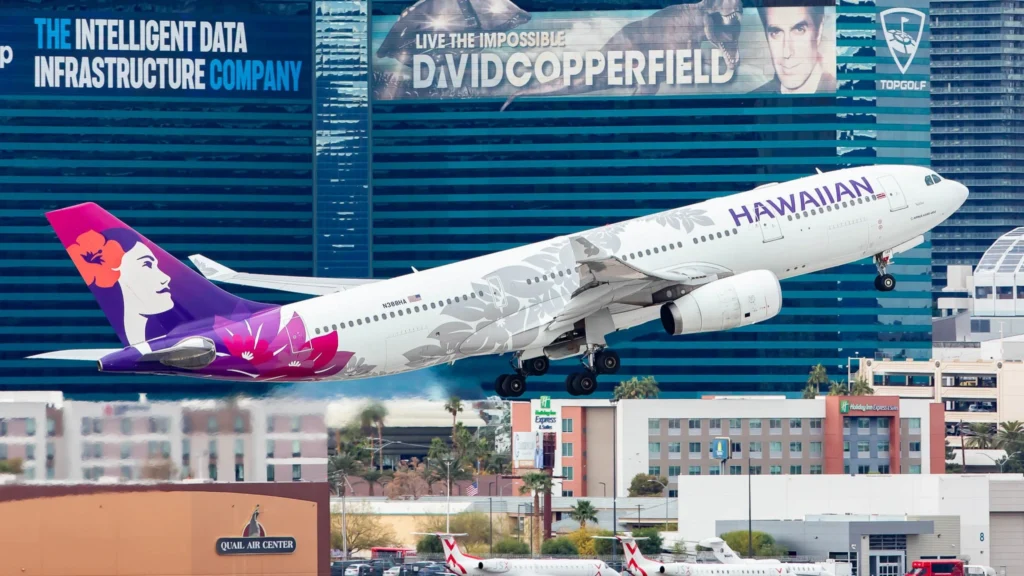 Photo: Clément Alloing
Photo: Clément AlloingAirline Responses
In response to rising incidents, airlines and regulators are enhancing safety measures. Many carriers now limit the size and number of lithium-ion battery devices allowed onboard.
The International Air Transport Association (IATA) provides guidelines on safely transporting such devices, emphasizing proper storage and handling.
Japan’s Ministry of Transport, which oversees operations at Tokyo Haneda (HND), reported no regulatory violations in the Hawaiian Airlines incident.
However, the event may prompt further scrutiny of lithium-ion battery policies. Crew training remains critical, with airlines investing in simulations to prepare for in-flight fires.
Stay tuned with us. Further, follow us on social media for the latest updates.
Join us on Telegram Group for the Latest Aviation Updates. Subsequently, follow us on Google News
Hawaiian Airlines A330 Aborts Takeoff at Los Angeles Airport
The post Hawaiian Airlines Flight to Tokyo Declares Emergency Amid Fire Onboard appeared first on Aviation A2Z.












